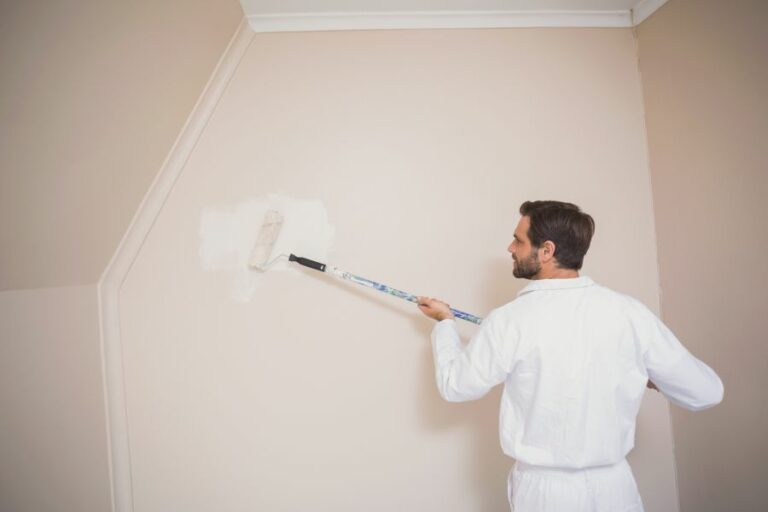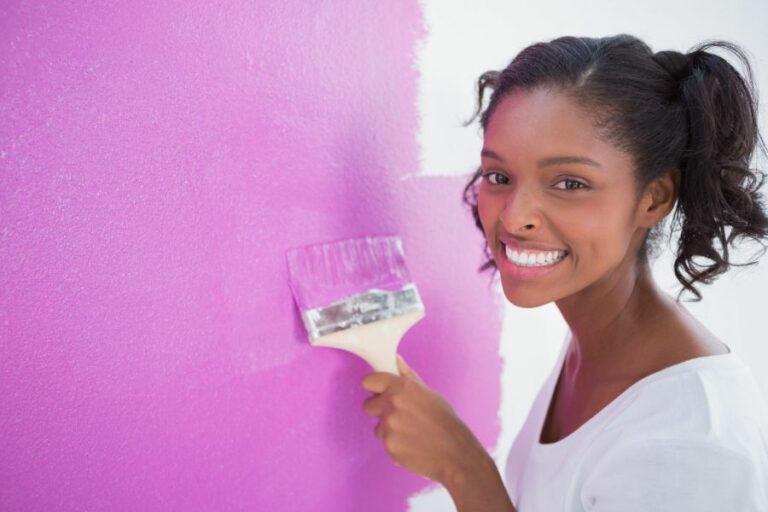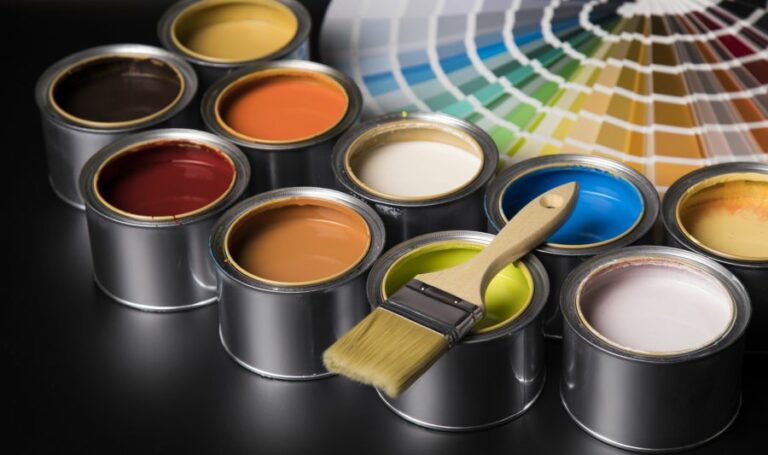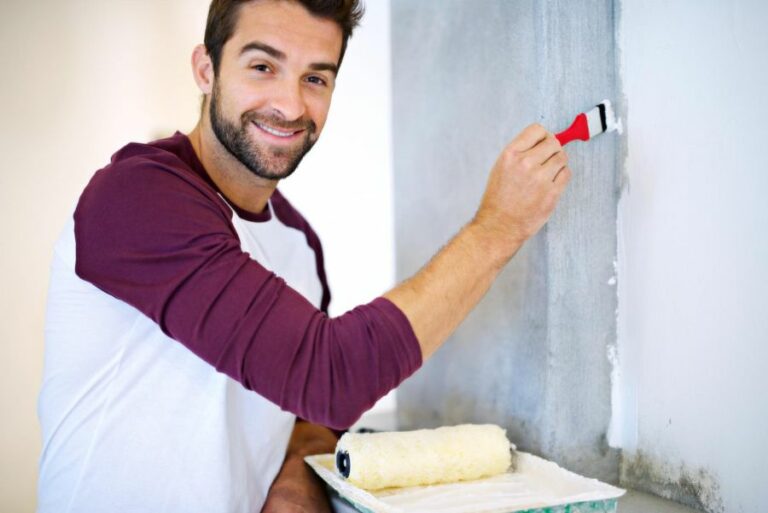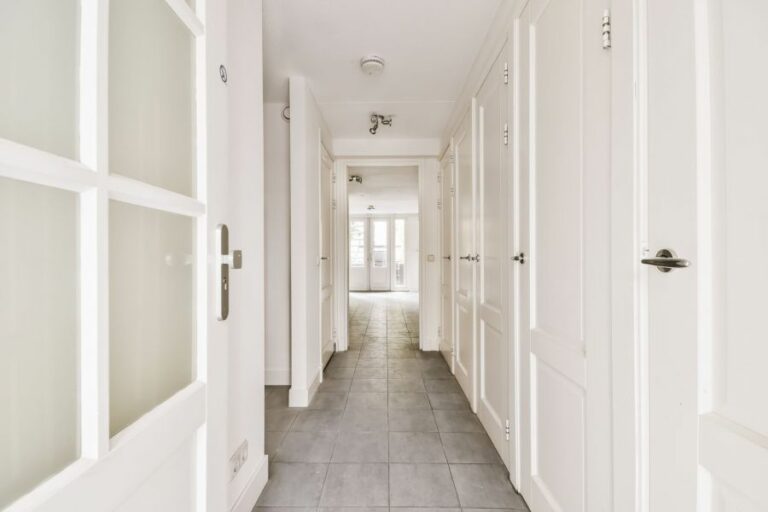What types of indoor paint are there, what pros say
Are you renovating your home and wondering what types of paint to use? Choosing the right indoor paint can initially seem daunting, but it’s crucial in determining your space’s overall look and feel. Not all paints are created equal; certain types work better for specific areas or surfaces.
What types of indoor paint are there:
Various indoor paint types are available, each with unique properties and recommended uses. Latex paint is the most commonly used, easy to apply, and ideal for walls, ceilings, bedrooms, living rooms, and high-traffic areas. Oil-based paint is durable, long-lasting, and great for kitchens and bathrooms. Acrylic paint is quick-drying and suitable for small projects like furniture or trim work. Chalk paint provides a shabby-chic look and is best for accent pieces and refurbishing furniture.

Read on to discover the different types of indoor paint available, their uses, and the finish each type provides. This article will help you choose the best paint for your indoor surfaces, whether after an elegant matte finish or a glossy sheen.
Contents
An Overview of the Various Indoor Paint Types Available
As someone who has spent years working in the painting industry, I can attest to the many different types of indoor paint available today. Each type of paint has unique properties; understanding these properties is essential to choosing the right paint for your indoor painting project. In this article, I will provide an overview of the different types of indoor paint available, their respective characteristics, and recommended uses.
• Latex Paint
Latex paint, also known as water-based paint, is the most commonly used type of indoor paint. It is easy to apply, dries quickly, and produces a low odor. Latex paint is available in various finishes, including flat, satin, eggshell, semi-gloss, and high-gloss. Latex paint is also easy to clean with soap and water, making it a convenient option for DIY tasks.
I recommend using latex paint for interior walls and ceilings. It is ideal for bedrooms, living rooms, and dining rooms. It is also great for high-traffic areas such as hallways, foyers, and family rooms.
• Oil-Based Paint
Oil-based paint, also known as alkyd paint, is durable and long-lasting. Oil-based paint is resistant to chipping and fading and produces a glossy finish. It is ideal for high-traffic areas like kitchens, bathrooms, and hallways. Oil-based paint is available in two finishes: semi-gloss and high-gloss.
I recommend oil-based paint for rooms that require a hard-wearing finish, such as kitchens and bathrooms.
• Acrylic Paint
Acrylic paint is a water-based paint that dries quickly and produces a low odor. It is available in various finishes, including matte, satin, and glossy. Acrylic paint is not as durable as oil-based paint but is ideal for small projects such as furniture or trim work.
I recommend using acrylic paint for trim work or furniture. It works best in low-traffic areas and is ideal for bedrooms, living, and dining rooms.
• Chalk Paint
Chalk paint is a matte finish paint that provides a vintage, shabby-chic look. It is a popular choice for furniture and decorative accessories. Chalk paint is easy to apply and requires no sanding or priming. It is also available in a wide range of colors.
I recommend using chalk paint for accent pieces, such as picture frames, mirrors, and decorative items. It is also great for refurbishing old furniture pieces.
• Milk paint
Milk paint is a natural, non-toxic, and eco-friendly option for indoor painting. It is made from milk protein, lime, and pigments and gives a matte finish. Milk paint is versatile and can be applied to various surfaces, such as wood, plaster, and drywall. However, milk paint requires multiple coats and is not very durable, making it more suited for decorative or accent walls.
• Conclusion
In conclusion, many different types of indoor paint are available on the market today. Each type of paint has its unique characteristics and recommended uses. Understanding these properties is essential to choosing the right paint for your indoor painting project.
As a professional painter, I recommend using latex paint for walls and ceilings, oil-based paint for high-traffic areas, acrylic paint for small projects, and chalk paint for accent pieces and furniture.
Type of Indoor Paint | Description |
|---|---|
Latex Paint | A water-based paint that is easy to clean up with soap and water. It dries quickly and has little to no odor. |
Oil-based Paint | A paint that is solvent-based and has a longer drying time. It can be hard to clean up and has a strong odor, but it provides a durable and glossy finish. |
Eggshell Paint | A type of latex or oil-based paint that has a low sheen finish. It is easy to clean and provides a subdued look. |
Satin Paint | A type of latex or oil-based paint that has a slightly glossy finish. It is easy to clean and provides a more noticeable sheen than eggshell paint. |
Semi-Gloss Paint | A type of latex or oil-based paint that has a high sheen finish. It is more durable and easy to clean than satin or eggshell paint. |
Gloss Paint | A type of latex or oil-based paint with a very high sheen finish. It is the most durable and shiny option but may be too harsh for specific indoor spaces. |
What is the optimal type of indoor paint?
If you are planning a home renovation or want to freshen up the look of your living space, painting the interior walls is an effective and affordable way of doing so. However, selecting the right type of paint can be an overwhelming task.
You need to consider several factors, such as the surface you are painting, the level of durability, and the finish you want. In this article, I will highlight the different types of indoor paint available and help you determine which one suits your needs.
• Factors to consider
When selecting indoor paint, there are several factors you need to consider:
– Surface
The type of surface you are painting will impact the paint you need. Different surfaces require different primers and preparation techniques. For example, if you paint over a dark or glossy surface, you may need a primer to prevent the old color from bleeding.
– Durability
Consider the level of traffic and wear and tear the area will experience. You may opt for more durable paint, such as oil-based paint, for high-traffic areas, such as hallways, kitchens, and bathrooms.
– Sheen
The sheen, or finish, of the paint, will impact its appearance and durability. Several finishes are available, including matte, eggshell, satin, semi-gloss, and high-gloss. Matte and eggshell finishes are more forgiving and can hide imperfections, while high-gloss finishes are more durable and easy to clean.
• Recommendations
From my personal experience, latex paint is the best option for most indoor wall painting projects. It is easy to apply, dries fast, and has a low odor, making it suitable for most homes. I recommend using a matte or eggshell finish for a modern and casual look or a semi-gloss finish for kitchens and bathrooms.
However, oil-based paint may be a better option if you paint a high-traffic area or want a more durable finish. Ensure you know the strong odor and high VOCs, and take the necessary safety precautions.
In conclusion, selecting the right type of indoor paint requires careful consideration of several factors, such as surface, durability, and sheen. Take your time to research and compare different brands and types of paint, and choose the one that best suits your needs and preferences.
Type of Paint | Pros | Cons |
|---|---|---|
Latex paint | Easy to apply, quick-drying, low odor, easy clean up | Not very durable, can peel or blister if applied over oil-based paint, may not adhere well to some surfaces |
Oil-based paint | Durable, good for high-traffic areas, and can be used on a variety of surfaces | Strong odor, longer dry time, requires harsh solvents for clean up |
Eggshell finish | Great for hiding imperfections, easy to clean, and good for low-traffic areas | Not very durable, can absorb stains and scuffs |
Satin finish | Durable, easy to clean, and good for high-traffic areas | It may highlight imperfections, can be more expensive |
Semi-gloss finish | Durable, easy to clean, good for high-traffic areas, great for moisture-prone areas like kitchens and bathrooms | It may highlight imperfections, can be more expensive, may appear glossy or shiny |
What Paint Type is Most Prevalent for Residential Homes?
As an experienced painter, I have encountered various house paints. However, one type of paint stands out as the most common: latex or water-based paint.
• What is Latex or Water-based Paint?
Latex or water-based paint is made from water, synthetic polymers, and pigments. The name “latex” refers to the presence of polymers that give the paint elasticity and durability. These paints contain no organic solvents, making them safe to use and more environmentally friendly.
• Why is Water-based Paint Popular?
There are several reasons why water-based paint is popular among homeowners and professional painters:
- Easy to Clean: Latex paints are easy to clean with soap and water. You don’t need any special solvents to clean brushes or spills.
- Fast Drying Time: Water-based paints dry faster than oil-based paints. This means you can apply multiple coats daily, saving you time.
- Low Odor: Unlike oil-based paints that emit strong fumes and harmful chemicals, water-based paints have a low odor, making them a safer option for indoor projects.
- Durable Finish: Water-based paints bond well with surfaces, creating a durable and long-lasting finish.
- Wide Range of Colors: Water-based paints are available in a wide range of colors, making it easy to find the perfect shade for your home.
• Types of Water-based Paints
There are several types of water-based paints, each with its unique features and uses:
- Flat Paint: Flat paint has a matte finish and is ideal for ceilings and walls with imperfections. It is the most forgiving type of paint, as it doesn’t reflect light, making it hard to notice imperfections.
- Eggshell Paint: Eggshell paint has a low sheen and is easy to clean. It is perfect for areas with moderate foot traffic, such as hallways and living rooms.
- Satin Paint: Satin paint has a slight sheen and is perfect for high-traffic areas like kitchens and bathrooms. It is easy to clean and has a more polished look than eggshell paint.
- Semi-gloss Paint: Semi-gloss paint has a high sheen and is perfect for trim, doors, and cabinets. It is highly durable and easy to clean.
• Recommendations
From my experience, I recommend using latex or water-based paint for most house painting projects. It is easy to use, quick-drying, and provides a durable finish. However, oil-based paint may be a better option when painting exterior surfaces as it is more resistant to the elements.
When choosing the type of paint, consider the room’s function and traffic flow. Use a more durable paint like semi-gloss or satin for high-traffic areas. For areas with imperfections, use flat paint as it is more forgiving.
In conclusion, latex or water-based paint is the most common type of house paint, and for good reasons. It is easy to use, quick-drying, and provides a durable finish. The different types of water-based paints make finding the perfect shade and finish for your home easy.
Paint Type | Popularity |
|---|---|
Latex Paint | Most Common |
Oil-based Paint | Less Common |
Milk Paint | Least Common |
Which Paint Finish Is More Suitable for Walls: Flat or Eggshell?
Choosing the right paint finish for your walls can be a daunting task. Flat and eggshell finishes have advantages and disadvantages, and it can be challenging to determine which is better for your project. In this article, we’ll look closer at these two finishes and help you decide which best fits your walls.
• Flat Paint Finish
Flat paint is a popular choice for walls in many homes. The main reason for this is its ability to hide imperfections and blemishes on the walls, making it an ideal choice for older homes. Flat paint has a matte finish, which gives it a soft and velvety appearance.
However, one of the drawbacks of flat paint is that it’s not very durable. It’s more susceptible to scuffs and marks than other finishes, which can be problematic in high-traffic areas. Additionally, flat paint is difficult to clean, and any attempts to remove marks or stains can result in patchy discoloration.
• Eggshell Paint Finish
Eggshell paint is another popular choice for walls. It has a slightly glossy finish that’s more durable than flat paint, making it a better choice for high-traffic areas like hallways, kitchens, and bathrooms. Eggshell paint is also easier to clean than flat paint, which is an obvious benefit.
One of the disadvantages of eggshell paint is that it can highlight any imperfections or blemishes on the walls. This is one of the reasons why flat paint is often the preferred choice for older homes with more blemished walls. Additionally, eggshell paint can be more difficult to apply than flat paint, requiring more coats and more time to dry.
• So, Which One is Better?
The answer to this question depends on the specific requirements of your project. Flat paint is likely the best choice if you’re painting an older home with many blemishes and imperfections. However, eggshell paint is the better choice if you’re painting a high-traffic area like a hallway or kitchen due to its durability and ease of cleaning.
I have extensive experience in painting homes and have found that the best approach is to determine your priorities and choose the finish that best meets those needs. Flat paint is probably the best choice if you’re looking for an affordable, easy-to-use finish that hides blemishes and is suitable for low-traffic areas. On the other hand, if you prioritize a finish that is durable, easy to clean, and highlights the look of your walls, eggshell paint is the way to go.
• Conclusion
In conclusion, flat and eggshell finishes have advantages and disadvantages, and deciding what to use ultimately comes down to your specific needs. If you need help deciding which one to use, seek the advice of experienced painters or try both finishes in a small area to see which works best for your walls.
Which Finish Is More Suitable for Walls: Eggshell or Satin?
As an experienced painter, I often get asked whether eggshell or satin paint is better for walls. The answer is not straightforward because it depends on various factors.
First, let’s define what eggshell and satin finishes are.
• Eggshell Finish
An eggshell finish is a low-sheen paint that reflects less light than a satin finish. It has a slight texture which helps to hide imperfections in the walls. The eggshell finish is ideal for areas requiring a tough finish that can withstand wear and tear.
• Satin Finish
On the other hand, a Satin finish is a smooth, medium-sheen paint that reflects more light than an eggshell. It has a velvety texture that gives the walls an elegant look. A satin finish is ideal for areas that require frequent cleaning or where moisture is a concern.
– Which One is Better?
Both eggshell and satin finishes have their pros and cons. Your choice will depend on your personal preference and the requirements of the space.
Eggshell Finish
If you have imperfect walls, an eggshell finish will hide them and give your walls a uniform look. An eggshell finish is also ideal for high-traffic areas such as hallways, living rooms, and bedrooms, as it is durable and requires little maintenance. However, it may not be the best choice for areas that require frequent cleanings, such as kitchens and bathrooms, as they may get stained and be difficult to clean.
Satin Finish
On the other hand, a satin finish is an excellent choice for areas that require frequent cleaning, such as kitchens and bathrooms, as it is more resistant to stains and can be easily cleaned. In addition, a satin finish gives walls an elegant and luxurious look, making it an ideal choice for formal living spaces or dining rooms. However, it may not be the best choice for walls with imperfections or frequently touched areas, such as doors and baseboards, as it tends to highlight imperfections and scuff marks.
– Recommendations
Based on my experience as a painter, I recommend using an eggshell finish for most walls and a satin finish for high-moisture areas such as kitchens and bathrooms. If you have walls with many imperfections, you may want to use an eggshell finish, as it will help hide them. For a more luxurious look, a satin finish is an excellent choice for formal living spaces, dining rooms, or accent walls.
In conclusion, neither eggshell nor satin is better for walls. Your choice should be based on the needs of the space and your personal preference. When deciding, consider factors such as durability, maintenance, and imperfections.

